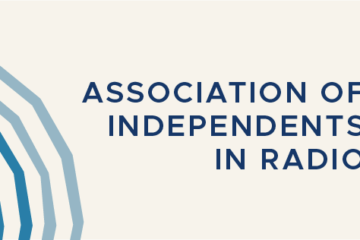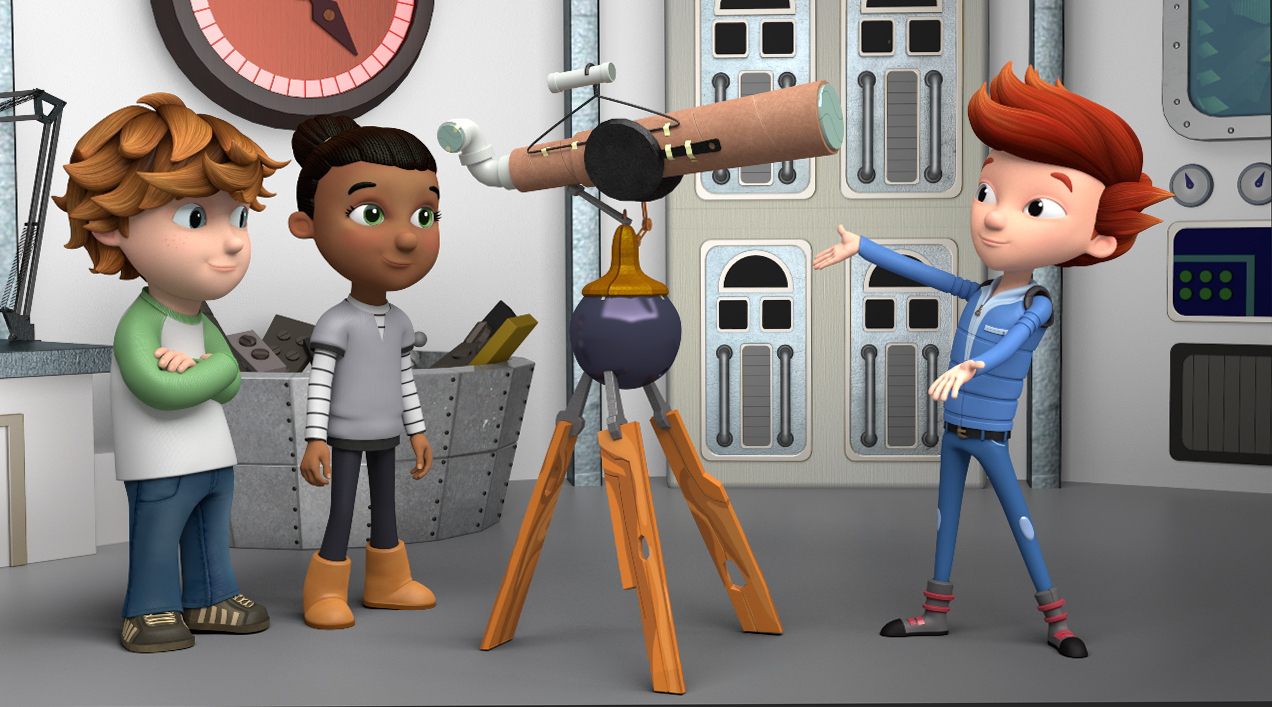Cohesion: It helps when collaborators want the same things
 There’s a growing disparity between the haves and have-nots among public stations. Their abilities to expand services and revenues are diverging. And if they were to collaborate on fundraising, they’d want different results from it.
There’s a growing disparity between the haves and have-nots among public stations. Their abilities to expand services and revenues are diverging. And if they were to collaborate on fundraising, they’d want different results from it.
That was the scene as described by 20 execs and consultants in the Public Media Futures forum held Feb. 16 in Washington, D.C., by the communication schools of the University of Southern California and American University in cooperation with Current.
 Revenues tend to burgeon where there’s a lot of audience, of course. In public radio, just 32 licensees bring in half of the revenue in the country, said Tom Thomas, co-chief of pubradio’s Station Resource Group. And the 65 largest stations with their repeating stations get half of the listening, he said.
Revenues tend to burgeon where there’s a lot of audience, of course. In public radio, just 32 licensees bring in half of the revenue in the country, said Tom Thomas, co-chief of pubradio’s Station Resource Group. And the 65 largest stations with their repeating stations get half of the listening, he said.
Population and fundraising expertise give those stations the edge to succeed at individual donations, which tripled in total amount between fiscal years 1990 and 2009.
A fiscal comparison cited by Thomas shows advantages of a bigger, urban licensee, including less risk if Congress slashes federal aid to CPB. Texas Public Radio, a multistation nonprofit in San Antonio earns 54 percent of its revenue from listeners and only 13 percent from CPB, government and universities. In contrast, rural Tri-States Public Radio in Macomb, Ill., gets just 9 percent of its budget from listeners and a giant 77 percent from the university that runs it, from CPB and from other government sources.
To improve its fundraising yields, Thomas said, pubradio is fighting a war on two fronts: enabling high-performance stations to fuel the system while also helping less advanced stations.
There’s also great disparity between public TV and public radio, with pubTV cash revenue declining 20 percent between 1999 and 2010 while pubradio’s grew more than 40 percent, Thomas said, citing CPB data (see also Current, Jan. 30). PubTV now remains far more dependent on CPB and government aid — providing 44 percent of its income, compared with 16 percent for pubradio.
Different wants and needs
The most common remedies prescribed lately for public stations’ fiscal woes are a range of mergers, collaborations and outsourcing deals that aim for greater effectiveness.
For instance, Doug Eichten, president of the fundraising group DEI, said the group will announce new shared services in coming months. His take is that stations should aim to share the expertise and scale of multistation bureaus rather than trying to upgrade 500 separate development offices to “best practices,” he said.
The end of matching grants from the feds’ Public Telecommunications Facilities Program last year is also prompting proposals for joint projects. “We can’t afford to be operating 165 or 170 different production studios around the country,” said Dennis Haarsager, a longtime station leader. “The way we’ve been operating is not going to work, in my view.”
 For 20 years or so, Dick McPherson has run a co-op of pubTV stations that share direct-mail materials, strategies and mailing lists, and by his account, it’s not for every kind of station.
For 20 years or so, Dick McPherson has run a co-op of pubTV stations that share direct-mail materials, strategies and mailing lists, and by his account, it’s not for every kind of station.
Though the McPherson Associates Public Media Co-op has had some very large stations as members, the biggest ones already operate at an efficient scale and aren’t looking to save money. Some smaller, less-advanced stations don’t care to complicate their business plans, often based largely on pledge drives, McPherson said.
The co-op also has “backed away” from including stations “that don’t have the basics covered,” he said. “If a collaboration is focused on remedial efforts, you’re dead.”
The interested stations, therefore, are a self-selecting bunch. Though he said they spend less than non-co-op stations to sign up a donor, they’re not joining just to hold down costs or get quick results, McPherson said. It’s more important to his clients to have “a safe place to try new things” for more productive fundraising. “We need to create a way for them to talk honestly with general managers out of the room.”
Bringing together the wrong mix of partners can stunt or kill a collaboration.
 Brian Sickora, a former CPB official who now manages WSKG-FM/TV in Binghamton, N.Y., was hired to become the third chief exec in the five-year life of Infinite OutSource, one of pubcasting’s biggest experiments in shared functions. He ended up closing it a few months later, in 2003 (Current, Jan. 13, 2003).
Brian Sickora, a former CPB official who now manages WSKG-FM/TV in Binghamton, N.Y., was hired to become the third chief exec in the five-year life of Infinite OutSource, one of pubcasting’s biggest experiments in shared functions. He ended up closing it a few months later, in 2003 (Current, Jan. 13, 2003).
Pubcasters may recall that Infinite OutSource didn’t work, Sickora said, but they probably make the wrong assumptions about why. He listed a number of its failings:
- Because the 10 founding stations in Florida controlled the organization, they held down the fees that Infinite OutSource charged them. Initially, CPB subsidized the fees; the stations “had no skin in the game.”
- Over time, the service bureau’s broad mix of services attracted client stations outside Florida, including Kentucky Educational Television, for whom the mix was a good fit. “They had come to this organization because it made sense for them,” Sickora said. Meanwhile, most Florida stations dropped the service. “If we had started with the 10 stations that were there when we shut it down,” he speculates, “we might have succeeded.”
- The clients’ needs were too infinite for an organization that was trying for economies of scale. Because many of the Florida stations have overlapping audiences and compete for donations, they weren’t happy to share the same fundraising materials. And because Infinite OutSource accepted clients using a number of different membership databases, it couldn’t run just one system for all.
Planners of the big shared master control project under development in New York state avoided that problem, Sickora noted, by requiring stations to standardize their automation software.
That old fruit question
Where are those “low-hanging fruit” most eager to be plucked by fundraisers?
“Ask for million-dollar gifts more often,” Thomas volunteered.
But asking for millions isn’t all it takes, interjected DEI’s Doug Eichten. Development officers can be trained to ask for seven figures, he said, but first stations must come up with a vision of public services worth the trouble.
Without a vision for what a public TV station can do in a community, station leaders may not see the point in mergers and collaborations to improve efficiency. Two station board chairs recently called consultant David Brugger, a former president of the Association of Public Television Stations, to inquire about a merger, he said, but they feared it wouldn’t pull the two stations out of economic decline.
Gary Knell, new NPR president speaks during the Public Media Futures forum last month.
Most often station leaders are aware that changes are needed, said John Barth, managing director of Public Radio Exchange, but they hold back, fearing change and the mistakes that will come along the way. They need to acknowledge that mistakes will happen, he said, and recognize that they can “reset, recalibrate correctly and move on.”
“I wish more stations and institutions were less fearful about the future, because there’s so much darn good talent in the stations,” Barth said, and so many talented young people “who want to be part of what we do.”
“I’m not worried about the future. I’m worried about the fear that’s holding us back.”
Joe Bruns, chief operating officer of Washington’s WETA-FM/TV, disagreed with the way Barth described the problem. “Any station involved in national production is not afraid of taking risks. The problem is deciding what are the right risks to take….We have limited risk capital and want to be careful about where we put it.”
Too often, Bruns said, “the ideas for stations to follow are not sufficiently developed, they’re not compelling enough. The business case has not been made.”
The series of Public Media Futures forums, planned by Mark Fuerst and officials of the two communication schools, will continue late in April near the Council on Foundations meeting in Los Angeles. A third forum will return to revenue questions during DEI’s Public Media Development & Marketing Conference in Seattle in July. The year’s fourth forum may be scheduled at the Online News Association’s San Francisco meeting in September, Fuerst said.
Covered with assistance from Karen Everhart.
Photos: Steve Behrens.
Comments, questions, tips? behrens@current.org
Copyright 2012 American University
FORUM PARTICIPANTS
In alphabetical order
John Barth, managing dir., PRX
David Brugger, consultant
Vinnie Curren, c.o.o., CPB
Deanna Deabler, NPR
Doug Eichten, DEI
Thomas Gibson, exec. dir., PMBA
Dennis Haarsager, Major Market Group
Maxie Jackson, pres., NFCB
Jacquie Jones, BlackPublicMedial.org
Kevin Klose, University of Maryland
Gary Knell, pres., NPR
Tom Livingston, chair, PMBA
Michael Marcotte, consultant
Jane McDonnell, exec. dir, ONA
Dick McPherson, McPherson Assoc.
Doug Mitchell, Unity Journalists
George Rivera, Digital Laundry
Marita Rivero, g.m., WGBH
Sue Schardt, exec. dir., AIR
Brian Sickora, g.m., WSKG
Vince Stehle, GFEM
Tom Thomas, co-c.e.o., SRG
Carol Varney, exec. dir., BAVC
Forum organizers
Ed Beimfohr, AU School of Comm.
Geoff Cowan, USC Annenberg
Mark Fuerst, forum organizer
Larry Kirkman, AU School of Comm.
Adam Powell, USC Center on Communication Leadership and Policy
EARLIER STORIES
Fundraising service to end sharing of services. Infinite OutSource is not so infinite, January 2003.
RELATED LINKS
In his blog for USC Annenberg, Adam Powell highlights Gary Knell’s remarks during the forum about diversity and NPR.
Current’s slideshow of the forum on Flickr.com.







